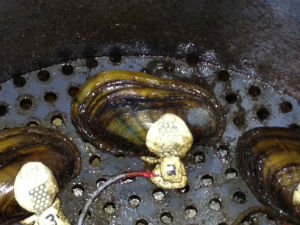
 In an era of increasingly sophisticated technology, two treatment plants on the Mississippi River are experimenting with what might be the original water-quality gauge: mussels.
In an era of increasingly sophisticated technology, two treatment plants on the Mississippi River are experimenting with what might be the original water-quality gauge: mussels.
Water departments in Minneapolis, Minnesota, and Moline, Illinois, are using native freshwater...







